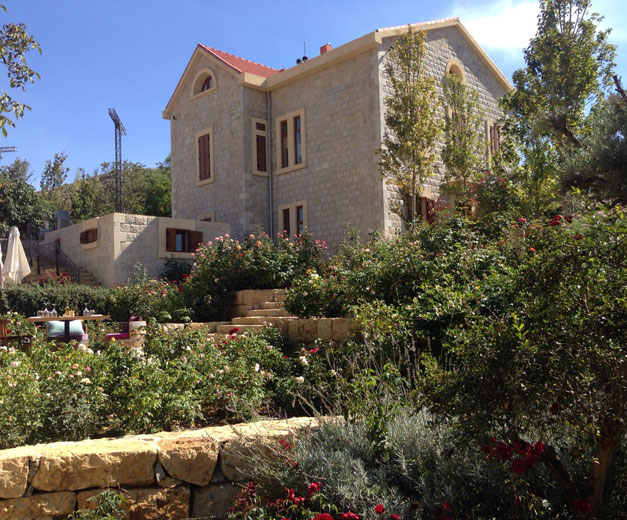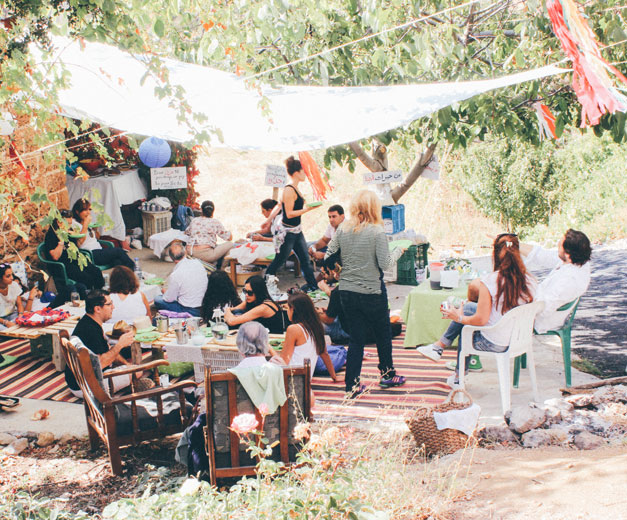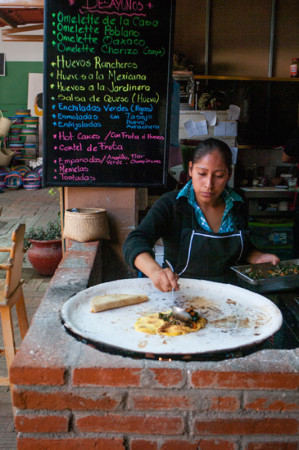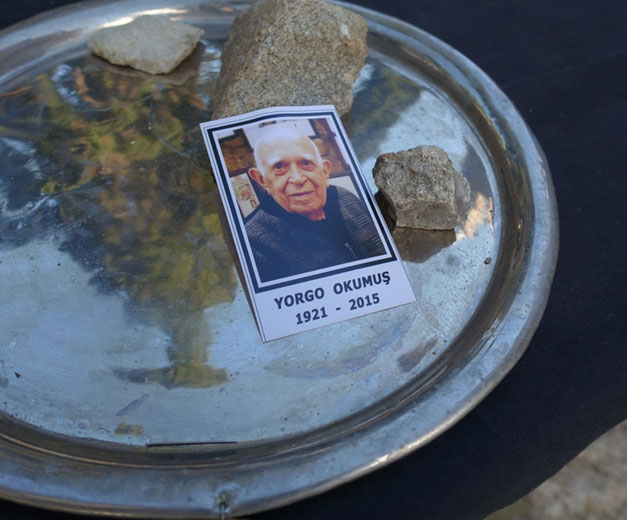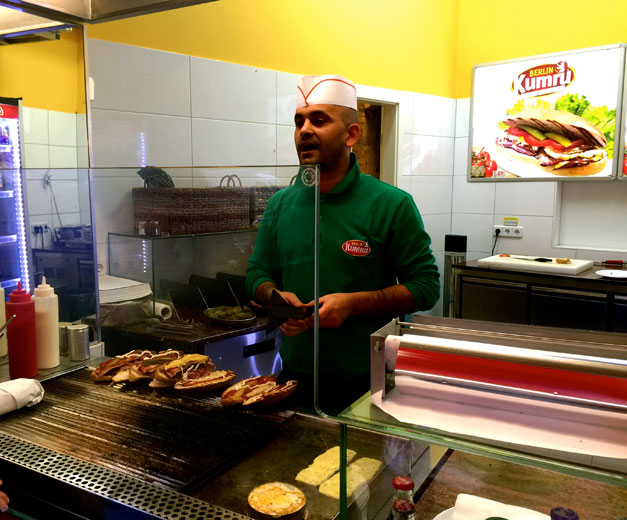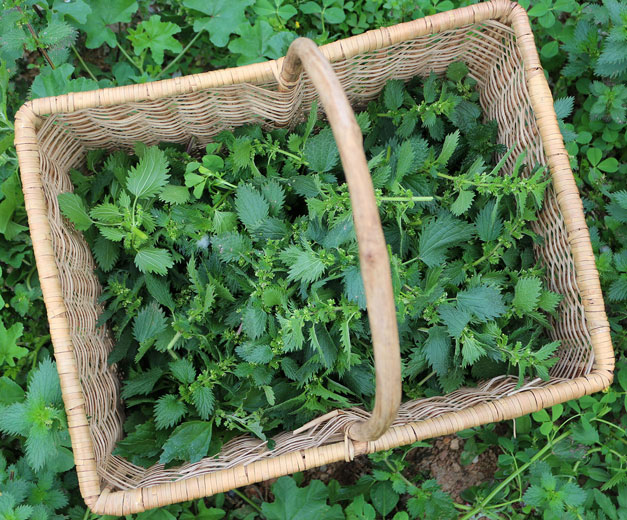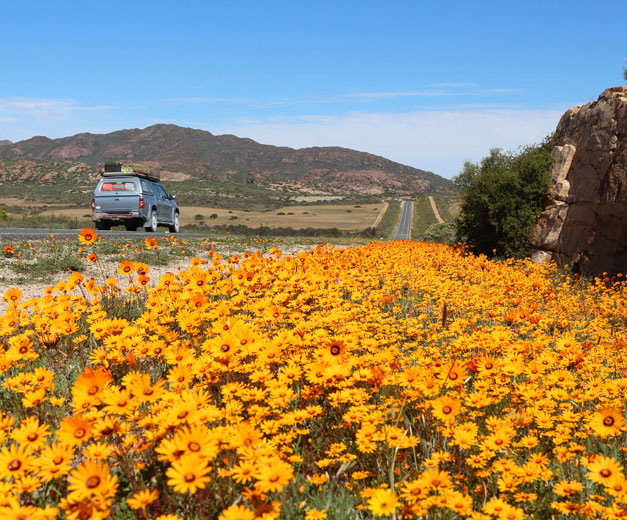We can't find the internet
Attempting to reconnect
Something went wrong!
Hang in there while we get back on track
Search results for
Athens
The Phyllofiles: Athens's Best Baklava
The subject of frequent arguments over who actually invented it, baklava has a history as multilayered as the flaky dessert itself. The story may actually go all the way back to the 8th century BCE and the Assyrians, who layered bread dough with chopped nuts and honey and baked the result – a kind of proto-baklava – in wood-burning ovens. Perhaps carried by the winds of trade, different versions of this ancient dessert appeared on Greece’s shores a few centuries later. The 3rd-century-CE Deipnosophistae ("Banquet of the Learned") – sometimes referred to as the oldest surviving cookbook – provides the recipe for gastrin, aka Cretan “Glutton Cake,” a sweet that also seems to presage the arrival of baklava as we know it. The instructions, attributed to Chrysippus of Tyana, one of the leading dessert experts of antiquity, calls for turning various chopped nuts, boiled honey and poppy and sesame seeds into a paste which is then spread between two sheets of thin, rectangular dough. At a certain point, ancient Greek cooks started using thinner sheets of pastry, better known as phyllo – Greek for “leaf” – getting closer to today’s baklava.
Read moreTokyo
Commune 246: The Truck Stop
National Route 246 is one of Japan’s main byways, stretching for over 76 miles and snaking through the center of Tokyo. The small part of Route 246 that runs between Shibuya and the Meijii Jingu Shrine was recently recreated for one of the best-selling video games of all time, Gran Turismo 3: A-Spec. It also happens to be the location for the food court heaven known as Commune 246.
Read moreBarcelona
CB on the Road: Santa Coloma de Farners' Ratafia Festival
2015 has been a banner year for the herb-infused liqueur known as ratafia. In the little town of Santa Coloma de Farners, within the Catalan province of Girona, locals have been making this unique libation for centuries, with each family passing down their own version of the drink from one generation to the next. In 1997, within the county’s official records, came a major food discovery – written recipes for three distinct styles of ratafia dating back to 1842, which are now recognized as the oldest of their kind in Catalonia. These handwritten lists of ingredients (along with other culinary notations, savory recipes and home remedies) were discovered in the old notebooks of Francesc Rosquellas, once the proprietor of a café/restaurant in Santa Coloma de Farners whose name had long since been forgotten.
Read moreIstanbul
CB on the Road: From Blog to Table in Alaçatı
On the western coast of Turkey, the town of Alaçatı sways to the light of a thousand glowing cafés. What was once a typically beautiful and sleepy Turkish fishing village has transformed into a hub for glitzy nightlife. People swarm the seaside walkways to see and be seen, arriving in metallic SUVs and humming Italian land rockets. Throngs of bejeweled summer vacationers stream through picture-book cobbled streets and whitewashed roads, but if you can break through the crowds, a fantastic meal awaits. Babushka Restaurant offers the opposite of what Alaçatı is known for: homey seclusion. Nestled in the walled garden of the chef’s home, restaurant goers are transported away from the hum of Alaçatı to the peace of their grandmother’s backyard.
Read moreAthens
Building Blocks: The Sweet Science of Making Greek Honey
Editor's note: Our recurring feature, Building Blocks, focuses on foods and ingredients that are fundamental to the cuisines we write about. This may come as a surprise, but little Greece is Europe’s fourth most important honey producer after Spain, Germany and Hungary. Every year, between 12,000 and 17,000 tons of this liquid gold are stolen from the country’s roughly 1.5 million hives and poured into jars to satisfy the local desire for honey. And it seems Greeks can’t get enough of it. They rank high among the world’s consumers, slurping up 1.7 kg per person every year as they use it to sweeten tea, drizzle over yogurt, slather on toast and soak baklava and other desserts. By contrast, the average American ingests a mere 400 grams.
Read moreElsewhere
Toros: Tantuni (the Kreuzberg Remix)
In Berlin, there is no shortage of meatless options, and vegetarians can even rejoice in a seitan-based döner kebab that is given the proper spit roast. What did surprise us is that the ubiquity of vegetarian diets in the city has greatly impacted one version of a meat-centric Turkish street food classic. Toros Tantuni is a small stand that occupies a rather lonely corner of the central part of the Kreuzberg district, a place once inhabited by a ragtag mix of immigrants, squatters and activists, ignored by most Berliners who could afford to live elsewhere. In recent years, however, the area has been thoroughly spritzed with the essence of gentrification and has a flood of innumerable bars, coffee shops and boutiques.
Read moreBarcelona
Las Delicias: Tapas with a View
Manolo, the protagonist of Juan Marsé’s 1965 novel, Last Evenings with Teresa, possibly the saddest Spanish love novel ever written, spends a great deal of his time drinking and playing cards with the local elders in Las Delicias. Well known to locals and Marsé’s devotees but unknown to many Barcelonans, this bar was founded in the Carmel neighborhood in the mid-1920s using a natural cave that was turned into a bomb shelter built just below the republican air defenses during the Spanish Civil War (1936-1939). El Carmel, a working-class neighborhood on Rovira hill with spectacular views over the city, was home to the Andalusian, Galician, Aragonese, Castilian and Extremaduran immigrants who moved to Barcelona looking for brighter futures during the postwar years, the 1960s and ’70s. Las Delicias soon became their favorite local eatery, as portions were larger than usual. Decades later, portions are still very generous, the bar is still a neighborhood institution and the menu still reflects the origins of those who once settled down here. There are Andalucian specialties such as calamares a la andaluza (deep-fried squid, €6.50), morcilla de Jaén (pork blood sausage, €1.60) and pincho moruno (marinated chicken on a skewer, €4.50); Galician specialties like pimientos de Padrón (€5.25), lacón con cachelos (boiled pork shank, €7) and pulpo a la gallega (boiled octopus, €13.95); Aragonese longaniza (pork sausage, €5.25) and Castilian callos (beef tripe stew, €5.25).
Read moreRio
Rotisseria Sírio Libanesa: The Open Table
On a Monday at 1 p.m., private equity investor Nargilla Rodrigues and her two colleagues bring a fourth co-worker to the Rotisseria Sírio Libanesa in Rio’s Largo do Machado neighborhood to initiate him to their weekly lunch ritual. An army of diners in business attire have packed the small restaurant and clump around the to-go counter. Rodrigues grabs a standing table and fires off an order of stuffed cabbage leaves, kafta and lentil rice like they are shares in a fire sale.
Read moreIstanbul
Fıstık Ahmet’in Yeri: The Perfect (Meyhane) Getaway
Büyükada has long been a popular destination for İstanbullus seeking a break from harried metropolitan life. With its array of quaint köşkler (Ottoman-era wooden mansions), walkable woods and relative quiet (automobiles are prohibited, so there’s none of the modern world’s ubiquitous, underlying machine hum), this five-square-kilometer island, about an hour’s ferry ride southeast of the city center, serves as a welcome counterpoint to the bustle and bother of existence in an urban agglomeration of 14 million. There’s just one problem: The dining scene is insipid. There’s no shortage of fish restaurants along the esplanade, just east of the ferry terminal, but in our experience they’re undistinguished – indeed, indistinguishable – and maddeningly overpriced: in short, tourist traps. Some of the boutique hotels offer reasonable, if unexciting, fare on-site, but if you want to dine out, that row of uninspired seaside eateries is the only game in town.
Read moreIstanbul
Osman’s Truck:
We generally wouldn’t recommend pulling yourself up into the back of a broken-down truck with no license plates that’s sitting in an empty lot down by the river, but Osman’s truck offers a rare glimpse of Istanbul if there really were no rules, and, not to mention, great views of the Golden Horn. In the back of Osman’s truck, with the winter sun reflecting off of the Golden Horn just 20 feet from the hitch, the subject of discussion on a recent afternoon was freedom. “Commerce has ruined the free spaces, the nature within this city,” said Osman from behind the counter, located in the back of the covered truck’s cargo area, now converted into a cozy café, with low tables and padded benches. “There’s no pleasure in it!” added Mehmet, whose role here seemed to fall between maitre d’ and mascot.
Read moreIstanbul
A (Shady) Place in the Sun:
Summer months in Istanbul can be oppressively hot. In a city that seems more prone to laying asphalt than planting trees, a public place in the shade is hard to find. Though many Istanbulites escape to the green spaces outside of the city on weekends, we’ve compiled a few inner-city options for the urban picnicker looking for a break from the heat. First you’ll have to assemble the picnic basket. For its bountiful shopping options and convenience, we suggest doing so in the Cihangir neighborhood of Beyoğlu. In addition to a Carrefour supermarket, which is useful for certain picnic essentials, this area also has a few gourmet shops and fruit stands that easily fill the basket.
Read moreRio
Erisvaldo's Roscas: Dirty Doughnuts
Erisvaldo Correia dos Santos dreamed of being a star. He saw himself as a humorist, a singer maybe, and most certainly an artist. But the scrabbling northeastern immigrant came in 2005 to Rio, the Brazilian city of dreams, with just 20 reais – about $9 – in his pocket and a family to feed. “When I came here, I was hard as a coconut,” dos Santos says, meaning he was hard-up for cash. Nothing a little self-deprecation and naughty jokes couldn’t make up for. Food and guilty pleasure have a long, intertwined history, going all the way back to Adam and Eve. In that vein, snickering Brazilians have long appropriated the verb comer ("to eat") to mean a more carnal type of consumption. Rosca, the word for “screw,” has been turned into something even more blush-worthy, referring to other, fleshier things that can be screwed, and is also used to refer to a nicely round doughnut.
Read moreElsewhere
Chateau Belle-Vue: Bordeaux in Bhamdoun
Although it lags behind other Mediterranean countries in terms of production, Lebanon still boasts a considerable wine culture and nearly a dozen wineries. And because the country was part of the French mandate as well as being a large tourist hub in the Levant, wine is featured heavily in many restaurants and stores here. Beirut even hosts a yearly wine festival to promote its own viniculture. Much of Lebanon’s wine is produced in the Bekaa Valley in the eastern part of the country, but there is a growing number of boutique wineries perched upon the beautiful mountains not far from Beirut. A spur-of-the-moment road trip took us to one such property: Chateau Belle-Vue in the Mount Lebanon village of Bhamdoun.
Read moreIstanbul
CB on the Road: The Lambassador from the East
Şehzade Erzurum Cağ Kebabı is one of our favorite places in Istanbul for a satisfying, lamby meal. You could easily walk past its handful of outdoor tables, tucked into a bustling pedestrian-only shopping street in the Sirkeci neighborhood. But if you stay, proprietor and head grill master Özcan Yıldırım will make you an unforgettable dish. Cağ kebabı flips the ubiquitous döner concept on its side: Think layered lamb, lamb tail fat, garlic and spices, roasted on a horizontal spit, in front of a blazing wood fire. As the giant lamb cylinder’s outer edges caramelize, the grill master deftly slides an offset skewer into each glistening morsel, slashes the tender pink meat free from the mothership and repeats this process until your skewer is loaded up with perfect bites of lamb.
Read moreTbilisi
Tbilisi Sketches: Bread, the Georgian Way
Editor's note: This is the first installment in our new monthly series, Tbilisi Sketches, with illustrated dispatches covering local spots in Georgia's capital. Contributor Andrew North is an artist and journalist based in Tbilisi who spent many years before that reporting from the Middle East and Asia.
Read moreBarcelona
CB on the Road: Medieval Times in Peratallada
When you live in a medieval town that is as beautifully preserved as the little Catalonian hamlet of Peratallada, you are never too old for dress-up. All year round, these worn stone walls and charming plaças effortlessly take visitors back in time to the 10th century. However, on the first weekend of October, the sights, sounds, smells and tastes of the Middle Ages return to the narrow streets of this historic bastion in full and festive glory.
Read moreShanghai
Qian Xiang Ge: Sauce Dynasty
Guizhou is largely unfamiliar to most outsiders, but many Chinese consider the beautiful province one of the country’s last destinations unspoiled by mass tourism. Nestled between the Hunan and Yunnan provinces, Guizhou’s mountainous terrain has caused infrastructure development to lag behind other regions. Because of the various ethnic minorities that make up more than one-third of the population and who would often rather keep a more traditional way of life, Guizhou ranks at the bottom of the list for GDP per capita by province.
Read moreTbilisi
Shavi Lomi: The Black Lion for Golden Guests
In the Caucasus, guests are considered gifts from God. Georgians like to call them okros stumrebi – “golden guests” – an endearment that illustrates the stature the ever-hospitable Georgians give to those they host. And whenever our own golden guests come to visit in this remote corner of the world, we never fail to entertain them in our own surrogate dining room, Shavi Lomi (the Black Lion).
Read moreAthens
CB on the Road: Winemaking in Naoussa
Just an hour’s drive from Thessaloniki, right in the heart of Macedonia, beautiful Naoussa is a food and wine lover’s paradise. Full of tasty mezes and specialties made of pork and veal, as well as amazing pies, the local cuisine has evolved with the wine and tsipouro culture of the area. Vineyards are located all around Naoussa, climbing the eastern slopes of Mount Vermio (6,730 feet) and lying at altitudes of 500 and 1,100 feet above sea level, exposed to mostly continental climate, with icy-cold winters and hot summers cooled down by light sea breezes from the Aegean. This was the first area in Greece to receive an appellation back in 1971 and has served as a model for the Greek appellation system since.
Read moreIstanbul
Baba Söğüş: 100% Organ-ic
The story starts with two successful business executives, dreaming of a drastic change in their lives. They turn to what they love, eating, and find a gaping hole in Istanbul’s restaurant scene. Until just a few years ago, you’d know where this story was heading – a research trip to Naples or Bangkok, followed by the opening of a limp pasta restaurant in the environs of İstinye Park or some other upscale shopping mall. But not this time. The heroes of our story set their sights on the city of Izmir and its offal-laden cuisine. Izmir folk love kelle söğüş (boiled sheep’s head, served cold) and kelle tandır (a roasted version). While in Istanbul these specialties are largely a novelty, in the busy downtown markets of Izmir you’re more likely to come across kelle than kebab. Your friends from Izmir will never post a photo of a sheep’s head on their Facebook page with a freaked-out-looking emoticon because, to them, tucking into a sheep’s head lunch is just everyday business as usual. And, in Istanbul, it seems, the Izmir way of lunch could be catching on.
Read moreIstanbul
First Stop: Stavriani Zervakakou's Istanbul
Editor's note: In the latest installment of our ongoing series First Stop, we asked Stavriani Zervakakou, chef of the restaurant Karaköy Gümrük in Istanbul, where she stops first for food when she returns to Istanbul. (We've written previously about her First Stop in Athens.) Lamb liver skewers in the Aksaray district’s Horhor neighborhood; domatesli kebap with wheat pilaf behind the Egyptian Spice Bazaar in Eminönü; fish and bread from Emin Usta in Karaköy; a simple but delicious pressed sandwich with kavurma – beef rendered in its own fat – and kaşar cheese from Petek near the Galata Tower; or a postmodern kumru from 6/24 in Nişantaşı would be my top list for a first welcoming bite in Istanbul. The time of landing and my mood determine my final pick as a first stop, and when I feel adventurous I
Read moreShanghai
Strictly Cookies: Cookie Monsters, Inc.
For years, expats in Shanghai complained about the lack of quality desserts in the city. Perhaps they just meant familiar desserts, as locals were more than happy to point them to delicious egg tarts, mooncakes or Taiwanese iced treats. But alas, when it came to sweets, there seemed to be a Great Wall-sized divide between East and West. In an effort to bring together sweet tooths from both sides of the dessert dividing line, in 2010 Lexie Comstock started Strictly Cookies, an American-style cookie delivery company in Shanghai that she hoped would delight expats and win over locals along the way. Having first visited China in 2000 while in middle school, Comstock later plunged into studying Mandarin and majoring in East Asian Studies at Harvard.
Read moreIstanbul
The Salepçi of Sütçüler: The Hard Life of a Sweet Trade
By the name of the place, you’d expect the Sütçüler (“Milkmen” in English) district near Isparta in southern Turkey to be a dairyland paradise, thick on the ground with men carrying buckets sloshing fresh milk, cheese wheels stacked in cool dark sheds, verdant hills freckled with cows. But there are no milkmen in Sütçüler, at least not in the wintertime. The area’s name actually has nothing to do with anything going on in Sütçüler itself.
Read moreBarcelona
La Barraqueta-Resolís: Power (and Paella) to the People
El Resolís has already been through several reincarnations, each time as a meeting place for strong, yet completely different – sometimes opposing – social groups. But even across time, changing styles and menu updates and under different owners and chefs, the place has never altered its name or its basic culinary M.O.: traditional, populist, affordable. Located in the heart of the gypsy Gràcia district, El Resolís was founded in the late 19th century. During the second half of the 20th century, it became the headquarters and the social meeting point for the Falange, the fascist and sole legal party of the Francoist dictatorship. This extremely conservative regime repressed the official use of Catalan and other cultural expressions in Catalonia and other Spanish regions.
Read moreMexico City
CB Book Club: Alex Stupak and Jordana Rothman's Tacos
Editor’s note: In the latest installment in our Book Club series, we spoke to Jordana Rothman and chef Alex Stupak, co-authors of Tacos: Recipes and Provocations (Clarkson Potter, October 2015). How did this book come to be? We met right before Empellón Taqueria opened in 2011 and instantly felt that we were simpatico in the way we think about, talk about and approach food. We quickly became friends, and as time passed we began talking casually about collaborating on a book project. Eventually those musings turned into plotting and that plotting turned into a book deal, and here we are a few years later with our names on the cover.
Read moreMexico City
Birria Santa Bárbara: Hangover Helper
For a case of the morning-afters, Mexicans believe that the best cure is a bowl of hot and spicy broth. On Sundays you’ll find the bleary-eyed, hard-partying denizens of Mexico City seeking out restorative traditional soups like the tripe-based menudo, also known as pancita; caldo tlalpeño, made with chicken; and birria. Birria, which means “mess,” is a typical rustic dish from the western state of Jalisco, where it’s made with goat. In Mexico City, however, birria is most commonly made with beef, mutton or pork. And many birria lovers in this town swear by Birria Santa Bárbara in Colonia Verónica Anzures.
Read moreTokyo
Chanko Dojo: Hotpot (and Wrestle) Mania
It’s difficult to imagine a job where a major skill set is eating a vast amount of food and becoming as large as possible. Yet sumo wrestlers, in an effort to bulk up and to be able to throw their weight around in the ring, consume enormous amounts of protein-rich, calorie-heavy meals – primarily in a dish called chanko nabe (a one-dish hotpot) – hoping to do just that. At Chanko Dojo, diners are encouraged to fill up as much as possible as they soak up sumo culture. (For another eatery devoted to wrestling, read our review of this Mexico City spot.)
Read moreBarcelona
Can Vilaró: No Guts, No Glory
With all the talk about the benefits of quinoa, chia seeds, goji berries and similar superfoods, we can’t help but be a little taken aback when Dolors, one of the owners of the restaurant Can Vilaró, explains the benefits of eating cap i pota, a traditional Catalan stew made with calf’s head and leg and chickpeas. According to her, the gelatinous chunks of meat make the skin glow and fight wrinkles. “It works as well as the most expensive collagen facial cream available at stores,” she says with a cheeky smile.
Read moreIstanbul
Ceyhan Ocakbaşı: Wings of Industry
In many parts of Istanbul, it’s not unusual to reside amidst industry in progress. It could be a workshop in your building’s basement where fire extinguishers are refilled, a copper pot re-tinning enterprise just outside your front door or a knockoff Fendi purse assembly line you catch a surprising glimpse of as you look across the breezeway into an adjacent building. Despite zoning laws, the age-old tradition of living alongside the clang of the forge and the whir of heavy instruments is still a reality in Istanbul. And as hard as it may be to weed out all of these workshops, efforts over the past 40 years to do so are not without results.
Read moreOaxaca
El Pochote: Land to Table
Oaxaca has become one of our favorite food destinations in Mexico. A few weeks ago we visited the city again, but this time it wasn’t the moles or the decadent regional food that caught our attention, but an organic market where we had a delicious breakfast one morning. El Pochote (named after a thorny, flowering tree native to Central America) is an organization of local organic producers that was founded in November 2003 by local artist Francisco Toledo. Making an omelet at Mamá Lechuga, photo by Ben HerreraThe market offers all kinds of products, from vegetables and fruits to prepared meals and juices. The main objective of the market is to support those who grow or make healthy products of excellent quality, who interact with the natural environment in a way that respects local ecosystems and who maintain and increase the fertility of the soil and land.
Read moreIstanbul
Farewell, Yorgo: The "Heart of Beyoğlu" Passes On
On any given night, bustling, narrow Nevizade Street in the heart of Istanbul’s Beyoğlu district buzzes with thick crowds of evening revelers searching for the best table while clean-shaven waiters in their customary uniform of pressed white shirts and V-neck sweaters attempt to lure the crowds into their establishments.
Read moreIstanbul
CB on the Road: Isle of Meze
Forty-five minutes south of Çanakkale, a small but flourishing ferry port sits outside of the town of Geyikli. Nestled between olive groves and farms lies the main access point to the small island of Bozcaada. Until the late 1990s, Bozcaada was disputed territory between Turkey and Greece, isolating the island from foreign vacationers. As a result, the vine-covered passageways of the traditional seaside village have been preserved. Active resistance from island residents prevents large developments from being established and restricts the use of cars within the island’s main town. Consequently, Bozcaada is a haven for those seeking delicious food away from sprawling resorts and crowded beaches.
Read moreRio
Junta Local: New Market on the Block
Rio de Janeiro didn’t need to be told to host colorful outdoor fresh food markets. The feira is a carioca tradition, with wooden booths going up overnight at their weekly locales and filled with wares so standard any local could recite for you off his head what you can and can’t find there. But with a little kick from the tools of the digital age and a hipster-era recalibration of the local palate, the Rio feira has gotten a particularly nice new edition. Junta Local brings together local producers and budding chefs in a biweekly, rotating-location food-fest, often accompanied by live music.
Read moreElsewhere
Berlin Kumru: Ich Bin Ein İzmirli
The kumru sandwich – a specialty of Turkey's Aegean coastal resort district Çeşme – is one of our top guilty pleasures. It comes as heavy on the guilt as it does on the pleasure, with its sodium-laden, coma-inducing blend of grilled hot dog strips, salami slices and buttons of garlicky sucuk topped with melted kaşar cheese, fresh tomatoes and pickles served on a grill-toasted roll somewhat resembling a turtledove (kumru in Turkish).
Read moreElsewhere
Suuring and Sow Thistles: The Wild Vegetables of a Cape Spring
Winter in Cape Town is a wildly gentle season. Freezes are rare in the peninsula city. Instead, the coolest months of the year are defined by rain – sheets of it. Fields and forests and mountainsides turn deep green after the dry summer. Streams rush with tea-colored mountain water, pools form on the flats where arum lilies bloom in profusion, and by late winter, spring flowers are opening in the days of sunny blue sky between rain squalls.
Read moreRio
Majórica: Steak Date
If you go to Rio’s Café Lamas to see where leftist organizers met during Brazil’s military dictatorship, go to Majórica to eat steak where the city’s business and political elites gather today. Located on a residential street in Rio’s Flamengo neighborhood, the restaurant from the outside looks like a three-story house, but for the neon red cursive sign with its name. It was founded in 1963 by two brothers from the Spanish island of Majorca and is now owned by the daughter of one brother, together with 79-year-old Galician-born Ernesto Rodriguez, who worked his way up from being the restaurant’s janitor 50 years ago.
Read moreShanghai
Ask CB: Shanghai Wet Markets?
Dear Culinary Backstreets, I’ve heard about “wet markets,” but what are they exactly? And where can I find the best wet markets in Shanghai? Stocked with all the fresh produce and live seafood that hungry Shanghai residents could ever cook up, wet markets are an essential alternative to the brand-name supermarkets vying for their slice of the market share of the planet’s largest population. These markets are so named because the floor tends to be wet, thanks to the live fish flopping around and the vendors’ habit of throwing water on the ground to keep the area clean. They are, however, under constant pressure from the central government’s drive to urbanize the population and modernize facilities, which has led to the steady destruction of the more traditional ones.
Read moreBarcelona
CB on the Road: Martín Faixó in Cadaqués
“In Cadaqués, we cure anchovies differently than anywhere else,” Rafel Martín Faixó told us. We were sitting at long wooden tables outside of his family’s winery, on a sunbaked hilltop in Cadaqués, two and a half hours north of Barcelona. Rafel is the son of Carmen Faixó and Rafa Martín Mota, and together with his sisters Ester and Georgina, the five of them comprise the Martín Faixó (MF family) brand, featuring three restaurants in Cadaqués and the Celler Martín Faixó winery, with a rural tourism guesthouse on-site.
Read moreMexico City
Mercado San Juan Arcos de Belén: Produce to the People
Having been divvied up and overshadowed and even having come back from a nasty fire, the Mercado San Juan Arcos de Belén, also known as San Juan Salto del Agua, has hung on tight as a staple market in Mexico City’s downtown. Born from the 1950s-era split-up of the original San Juan marketplace, which stood only a few blocks away in what is now the Plaza San Juan off of Ayuntamiento, this is a very budget-friendly market in Mexico City’s downtown, largely bereft of high-end delicacies but bustling with mostly working-class families. It is shouldered by two major traffic conduits, Eje Central and Arcos de Belén, and sits atop the two-line intersection of Metro Salto del Agua on the forest-green and pink lines.
Read moreShanghai
Ask CB: MSG Worries?
Dear Culinary Backstreets, Should I be concerned about MSG when I eat in Shanghai? The addition of MSG to Chinese food has been dividing diners for decades now, yet it appears that most people still don’t really know why they’re trying to avoid the stuff, or if they should even be concerned. We’re here to clear that up, once and for all.
Read moreAthens
CB on the Road: The Cheesemaker of Amorgos
In May, we visited some friends on the beautiful island of Amorgos. While we were driving to the south of the island, in the Kolofana area we came across a very small kafeneio, or traditional coffeehouse. We only wanted to make a quick stop for a cup of coffee and a glass of water, but we ended up getting a lot more than we bargained for.
Read moreIstanbul
Dürümcü Mehmet’in Yeri: The Sharing Economy
Istanbul’s Aksaray neighborhood harbors an unfortunate reputation derived from its seedy nightclubs and the heavy presence of illegal brothels, which turn profits from sex trafficking. But as the city continues to transform at dizzying speeds, Aksaray’s status as an underbelly has begun to be overshadowed by that of a diverse, exciting culinary destination. Streetside Syrian cafés churning out cheap and reliable falafel and shawarma; a handful of Uighur restaurants serving dishes of spicy peppers and succulent morsels of beef bathing in handmade noodles prepared to order; and Georgian drinking dens, where chacha, a grape-based moonshine, is brought out in plastic water bottles alongside juicy, lovingly made dumplings, are just a few of the international cuisines that can be sampled in Aksaray.
Read moreTbilisi
Ezo: Just Like Mom's
The 19th-century homes in old Tbilisi neighborhoods were built in a style Georgians call “Italian Courtyards,” where through a gate or arch you enter a quad enclosed by stories of balconies shared by each family on the floor. This courtyard was the nucleus of each building, where kids safely romped around, monitored by adults from the windows above, as men contemplated domino moves at a table under a tree and women beat rugs on an iron rack in a corner.
Read moreRio
Food Complex: A Favela's Culinary Side Emerges
Comprising a city within a city made of housing complexes and self-built neighborhoods, the Maré favela complex in Rio’s North Zone packs 130,000-plus residents into the area between the Avenida Brasil highway and Guanabara Bay, just south of Rio’s International Airport.
Read moreShanghai
Yang Yang's Dumplings: The Other Yang
Search online for Shanghai’s best fried dumplings, and you’ll come up with hundreds of results extolling Yang’s Fried Dumplings. Though it was once just a humble shop sandwiched between the Bund and People’s Square, the online renown and ensuing crowds have propelled the brand into chain-store ubiquity, populating new malls and shopping streets with fervor. In essence, they’ve become the Starbucks of dumplings; you’re going to get a relatively consistent product, but come on, you can do so much better! Enter Yang Yang’s.
Read moreBarcelona
Building Blocks: Spain's Big Little Fish
Editor's note: To inaugurate our new series, Building Blocks, which explores the fundamental ingredients of the cuisines we cover, we turn to Spain, where anchovies play a large role in the cooking of many regions there. Anchoa, boquerón and bocarte: These names – in Spanish, Basque and Catalan, respectively – all describe the same little fish, the anchovy, and to make matters more confusing, the names also indicate how the fish is prepared, depending on what region you’re in.
Read moreElsewhere
CB on the Road: Boerekos in South Africa’s Blommetjies
In South Africa, many roads lead to boerekos. We chose the N7, the tar artery connecting Cape Town and Namibia. After winter rains, the barren land along the way – known as Namaqualand – bursts into spectacular, botanical hotspot bloom. The floral diversity here is unique. Also unique is the local food.
Read moreAthens
Greece's 2015 Wine Harvest: Smaller Is Better
There is an ancient saying in Greek, Theros, Trygos, Polemos, meaning “wheat harvest, wine harvest and war”: All three are situations that need immediate attention and cannot be postponed until later. Hopefully there will be no war, but having completed the wheat harvest, we are nearing the finish line of the wine harvest.
Read more











